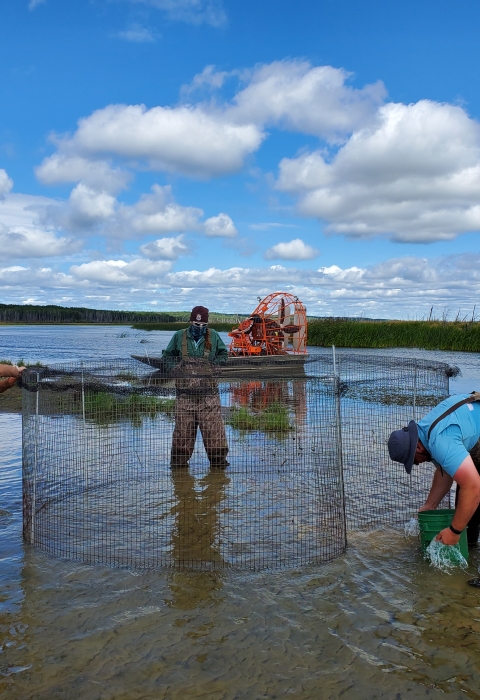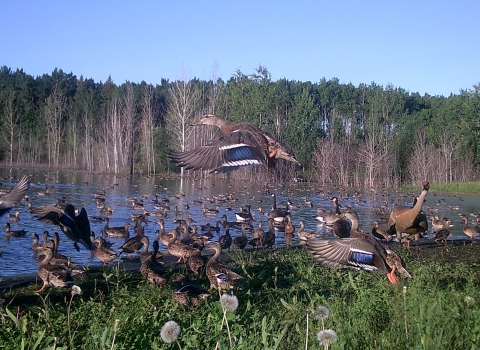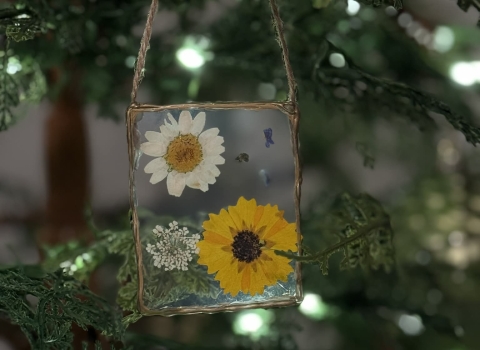It’s been nearly three years since a leg band has been placed on a duck at our bird banding station in the central Saskatchewan’s boreal forest. We returned to the Churchill River this month with tremendous elation to see familiar landscapes and faces while also hoping to see an abundancy of waterfowl and wildlife. We kicked off our bird banding excursion with a spectacular display of the northern lights during our first night at camp. Dazzling colorful rays and spirals in vibrant greens with hints of yellow flowed and danced across the night sky, and the crew took this as an omen of sorts. A lot has happened in the world since the last time the crew was cruising the marshes of the Churchill River back in August 2019. Although a lot of time has passed since the last bird banding excursion, the marsh looks very similar to its past self. However, we noticed fewer waterfowl occupying this rich habitat than in August 2019. This is perhaps due, in part, to the ample water and habitat available both to our north and south.
We were greeted back to the bush of western Canada with very warm, well-above average weather, that, unfortunately, made it difficult to attract ducks to our bait. The warm weather, late spring, and a slough of other variables has seemingly thrown much of the waterfowl off their annual natural calendar, called phenology.
Despite the pressing heat, we were able to capture a fair amount of mallards, American green-winged teal, blue-winged teal, northern pintails, northern shovelers, and American wigeon. We also saw a healthy amount of other ducks like buffleheads, ring-necked ducks, redheads, canvasbacks, grebes, mergansers, and a whole host of shorebird species. We were fortunate enough to capture a goldeneye, a rare occurrence for our shallowly-placed swim-in traps. We were also privileged to see other wildlife that benefit from similar wetland habitat, such as numerous beaver, mink, muskrat, and even a couple of black bears ghosting the banks of the river.
As we wrapped up our final days in bird banding camp, the ducks were finally noticing the baiting stations. The weather continued to be well above average, but we continued to keep our spirits high despite the warmth. Even with a below average year for capture numbers, we enjoyed the comforts of the Great White North and took in as much as we could before our time was over. The boreal forest’s bush is such a special place to live and work for a month!







